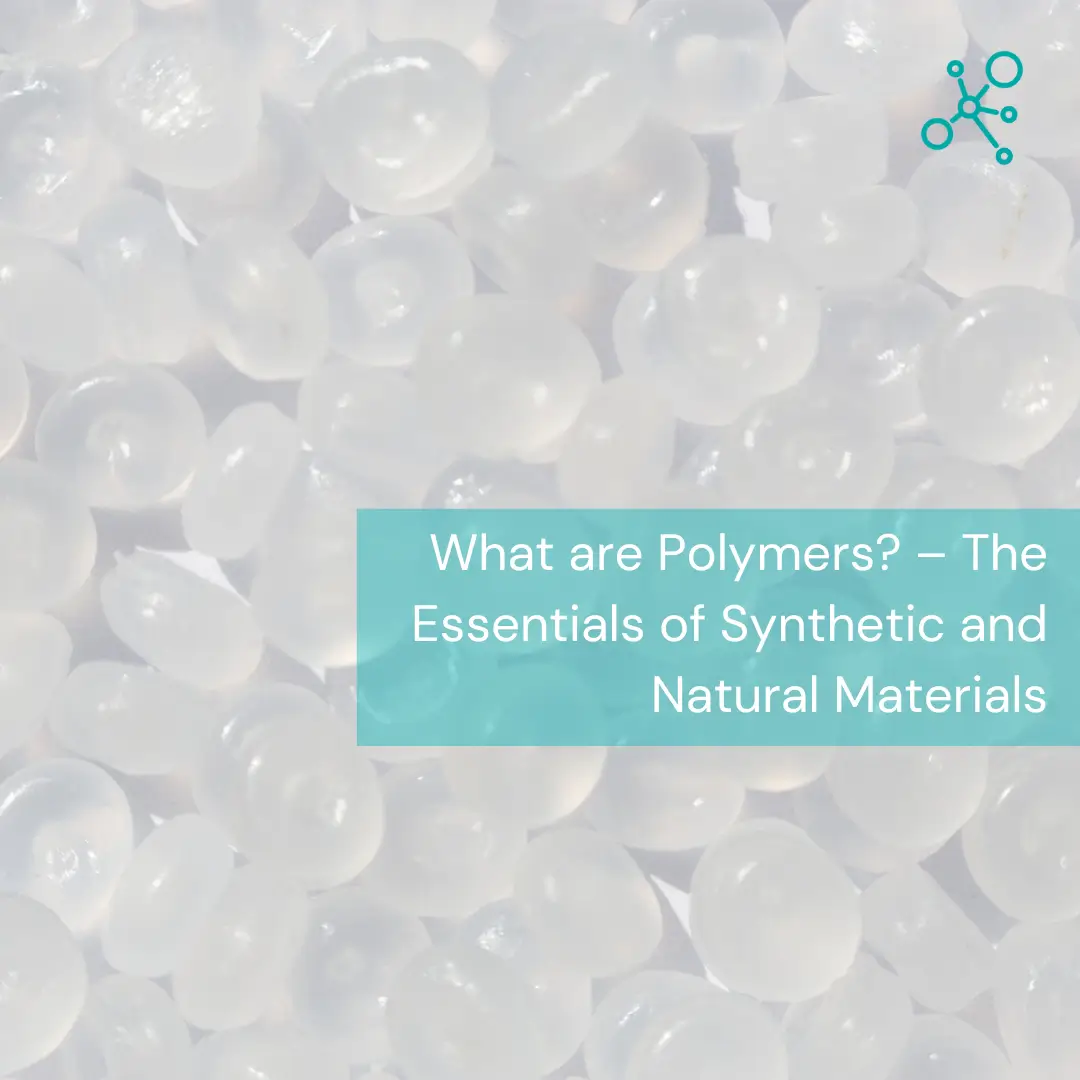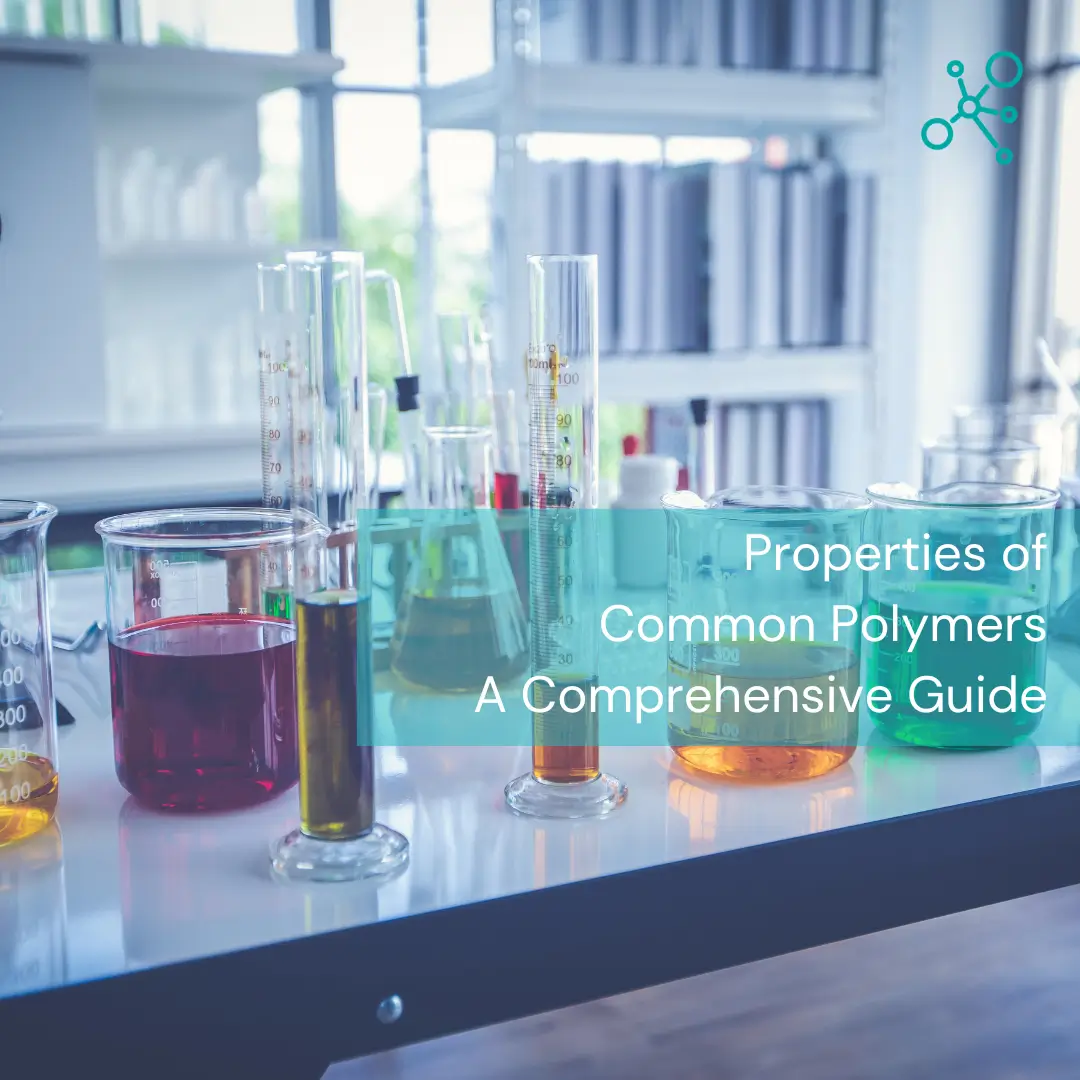
What are Polymers? – The Essentials of Synthetic and Natural Materials
Understanding polymers is key to navigating the world of materials science. This comprehensive guide will take you through the basics, types, properties, and applications of polymers, providing a deep dive into the substances that play a crucial role in our everyday lives.
Table of Contents
- Introduction
- The Basics of Polymers
- Types of Polymers
- Properties of Polymers
- Polymer Synthesis and Production
- Applications of Polymers
- Environmental Impact and Sustainability
- Conclusion
Introduction
Polymers are everywhere. From the plastic bottle that holds your water to the nylon in your backpack, these materials are integral to numerous aspects of modern life. But what exactly are polymers? In its simplest form, a polymer is a large molecule composed of repeating structural units, typically connected by covalent chemical bonds.
The Basics of Polymers
Defining Polymers: The Science Behind the Substance
Polymers are long chains of molecules called monomers. These monomers link together like the cars of a freight train, forming large, complex structures. The process of forming polymers from monomers is known as polymerization, which can occur naturally or synthetically.
Natural vs. Synthetic Polymers: A Comparison
Natural polymers include proteins, cellulose, and natural rubber, all of which are fundamental to life and the environment. Synthetic polymers, on the other hand, are human-made and include plastics like polyethylene, polystyrene, and polyvinyl chloride (PVC). Each type of polymer has unique properties and uses, which we’ll explore in detail.
Types of Polymers
Polymers come in various types, each with unique characteristics and uses. Understanding these types can help us select the right material for the right application.
Exploring the Different Types of Polymers
The world of polymers is diverse, with each type offering different properties that make them suitable for various applications.
Thermoplastics: Features and Common Uses
Thermoplastics are polymers that become moldable upon reaching a certain temperature and solidify upon cooling. Common examples include:
- Polyethylene (PE): Used in packaging films and containers.
- Polypropylene (PP): Found in automotive parts and textiles.
- Polystyrene (PS): Used for insulation and disposable cutlery.
Thermosetting Plastics: How They Differ from Thermoplastics
Unlike thermoplastics, thermosetting plastics retain their shape and cannot be remelted once set. They are often used in:
- Epoxy resins: For coatings and adhesives.
- Melamine: In kitchenware and laminates.
Elastomers: Stretchy Polymers with Unique Properties
Elastomers are rubber-like polymers that can stretch and return to their original shape. They are key in:
- Natural rubber: Tires and footwear.
- Silicone: Medical devices and sealants.
Properties of Polymers
The properties of polymers determine their suitability for different applications. Here, we delve into the characteristics that make polymers so versatile and valuable.
Key Properties of Polymers and Their Impact
Polymers exhibit a range of properties that can be tailored to meet specific needs.
Durability and Resistance: Why Polymers Are So Versatile
Polymers are renowned for their durability and resistance to chemicals, weather, and physical stress. This makes them ideal for use in:
- Packaging: Resistant to moisture and provides long shelf life.
- Automotive parts: Can withstand heat and mechanical stress.
Conductivity and Insulation: Electrical Applications of Polymers
While most polymers are insulators, some have been developed to conduct electricity. These conductive polymers are used in:
- Electronics: As antistatic coatings and in organic light-emitting diodes (OLEDs).
- Energy storage: In batteries and supercapacitors.
Polymer Synthesis and Production
The creation of polymers is a fascinating process that involves the transformation of simple molecules into complex materials with a wide range of applications.
How Polymers Are Made: The Synthesis Process
Polymer synthesis is the process by which monomers are chemically bonded to form polymers. This can be achieved through various methods, including:
- Addition polymerization: Monomers add to each other without the loss of any atoms.
- Condensation polymerization: Monomers join together with the loss of small molecules, such as water.
Polymerization Techniques: From Monomers to Polymers
Different polymerization techniques are used depending on the desired properties of the final product. For instance:
- Bulk polymerization: Involves the polymerization of monomers without any solvent.
- Solution polymerization: Conducted in the presence of a solvent to control the reaction temperature and polymer characteristics.
Industrial Production of Polymers: Scale and Methods
On an industrial scale, polymer production must be efficient and cost-effective. Manufacturers often use:
- Continuous processes: For the production of polymers like polyethylene, where the reaction proceeds without interruption.
- Batch processes: Suitable for producing polymers that require more precise control over reaction conditions.
Applications of Polymers
Polymers are not just theoretical constructs; they are practical materials that have revolutionized various industries. Let’s explore some of the most common applications of polymers in different sectors.
The Role of Polymers in Various Industries
The versatility of polymers allows them to be used in a myriad of ways, from everyday household items to advanced technological applications.
Polymers in Packaging: Flexibility and Protection
Packaging is perhaps the most visible application of polymers. Their ability to form durable, lightweight, and flexible materials makes them ideal for protecting a wide range of products. For example:
- Polyethylene terephthalate (PET): Commonly used in beverage bottles.
- High-density polyethylene (HDPE): Used in milk jugs and grocery bags.
Medical Applications of Polymers: Saving Lives
In the medical field, polymers are used in a variety of applications due to their biocompatibility and sterilizability. They are found in:
- Surgical instruments: Due to their lightweight and easy-to-sterilize nature.
- Prosthetics: Where polymers like silicone provide comfort and flexibility.
Polymers in Construction: Building the Future
The construction industry benefits greatly from the use of polymers. They provide insulation, structural components, and waterproofing, among other uses. For instance:
- Polyvinyl chloride (PVC): Used for pipes and window frames.
- Polystyrene foam: Commonly used as insulation material.
Environmental Impact and Sustainability
The production and disposal of polymers have significant environmental implications. This section examines the challenges and the strides being made towards sustainability.
Polymers and the Environment: A Double-Edged Sword
Polymers, particularly plastics, have come under scrutiny for their environmental impact, particularly in terms of waste and pollution. The issues include:
- Non-biodegradability: Many synthetic polymers do not break down easily, leading to long-term environmental accumulation.
- Recycling challenges: Not all polymers are easily recyclable, and mixed materials can complicate the process.
The Issue of Plastic Waste: Challenges and Solutions
Plastic waste is a global concern, with vast amounts ending up in landfills and oceans. Solutions being explored include:
- Improved recycling methods: Enhancing the efficiency of recycling processes to handle more types of polymers.
- Biodegradable polymers: Developing materials that can decompose naturally without harming the environment.
Biopolymers: The Sustainable Alternatives
Biopolymers, made from renewable resources, offer a promising alternative to traditional plastics. They are used in:
- Packaging: Biopolymers like PLA (polylactic acid) are used in compostable packaging.
- Agriculture: Biodegradable mulch films made from biopolymers help reduce waste.
Conclusion
Polymers are a cornerstone of modern industry and daily life. Their versatility and range of applications make them invaluable, yet their environmental impact cannot be ignored. As we continue to rely on polymers, it is crucial to pursue sustainable practices and materials to ensure a balance between utility and environmental stewardship.

